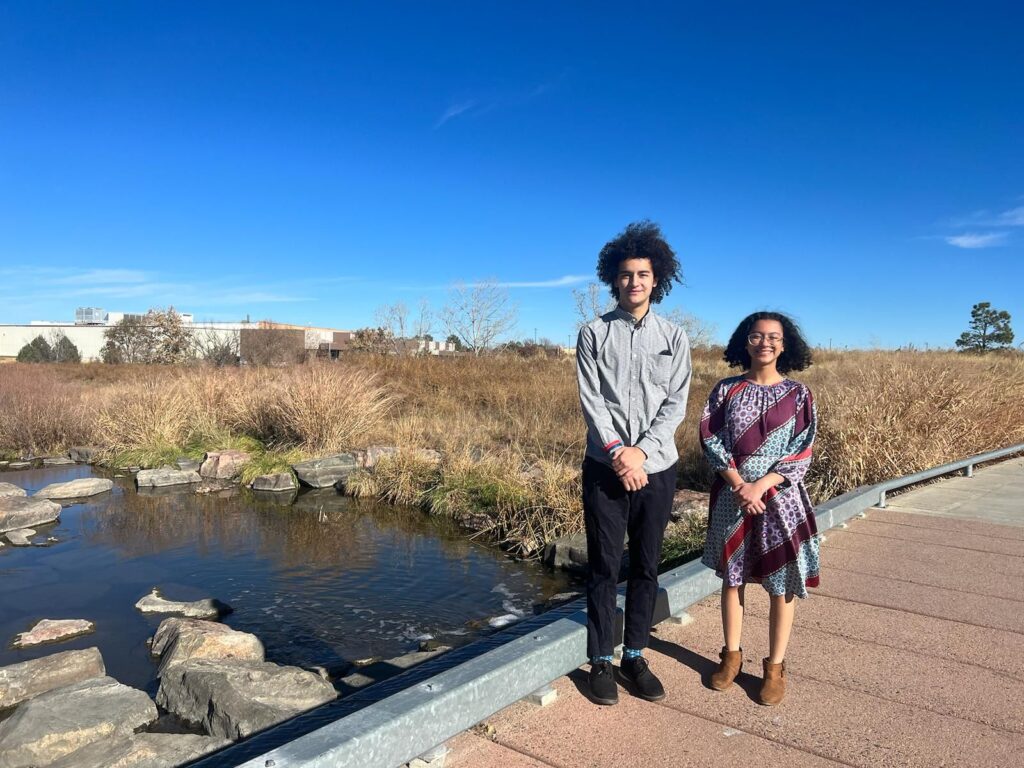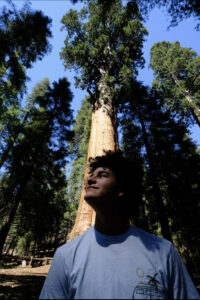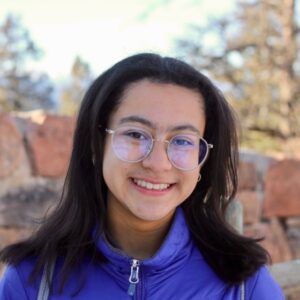Climate Action
EARTHDAY.ORG’s Interview with Two Youth Climate Activists
April 17, 2024

Beckett Nelson-Gardner and Amelia Fernández Rodríguez
Do you ever feel paralyzed by climate anxiety? Want to help the planet, but not sure how to go about it? I can assure you, you are not alone.
According to Yale, as of July 2023, 7% of the U.S. population was experiencing diagnosable “psychological distress” as a result of the climate crisis, with higher rates of anxiety attributable to people who identify as Hispanic/Latino or Gen Z/Millennial.
Which is why I was so excited when I first heard about Denver Public Schools Students for Climate Action (DPSS4CA). This student-led organization has turned despair into action by lobbying school board members, city council members, and Colorado state legislators for achievable climate policy. And you know what? It’s working.
Denver Public Schools is now one of only six school districts in the country with a climate action plan. The plan is a robust, 114-page document with specific goals tied to three “North Star[s]”: environmental protection, economic prosperity, and social development. In it, the district commits, among other things, to “[r]educe overall greenhouse gas emissions by at least 90% by 2050 (from a 2010 baseline).” Can you imagine what would happen if other school districts—and industries, and governments—did the same?
Earlier, I spoke with the co-presidents of DPS Students for Climate Action: Amelia Fernández Rodríguez and Beckett Nelson-Gardner. Below are excerpts from our conversation.
J: Thank you both again for meeting with me. Can you please introduce yourselves and tell us a little bit about what you do when you’re not climate activists?
B: My name’s Beckett Nelson-Gardner. I am a junior at Denver East High School and I got into sustainability through my school sustainability club. When I was in middle school, I learned about sea level rise and that kind of kickstarted my journey through the environmental [space]. When I’m not doing sustainability work…I play music, I’m in a jazz band. I also play sports: I’m in soccer, cross country. And I do a bunch of other fun high school-related stuff.

A: My name is Amelia Fernández Rodríguez. I’m currently a junior at DSST: Conservatory Green High School. I first learned about climate change in 7th grade… I vividly remember learning about the Keeling Curve. We watched this Al Gore TED Talk about it. I felt so discouraged afterwards, and I knew I had to do something about it. I started small, doing small things, until 8th grade, when I went a little bigger and joined DPS Students for Climate Action.
I’m kind of a full-time climate activist, but in my free time, I play piano, I like to go hiking. In the summer, I like to try vegan recipes and go skiing in the winter.

J: Can you tell us more about how DPS Students for Climate Action was formed, who makes up the organization now, and what the overall mission of the organization is?
A: DPS Students for Climate Action [was] founded by about 30 students in February 2021. We felt that DPS had the responsibility of ensuring the students a livable future. So we campaigned for almost two years to get DPS to pass a climate policy and a climate action plan.
The campaigning consisted of going to public comment. Public comment is a designated time each month to talk to the school board members. We went almost every month to public comment until we got their attention. So the day before Earth Day, April 21, 2022, we got the policy passed. And it was followed by a 100+ page climate action plan…
B: I think the main thing in answer to Who are we? and What are we doing? is we’re a group of students working in the district to try to connect individual sustainability clubs with broader decision-making. As she said, we have connections with DPS Sustainability and the board, but we also have connections at our schools, like my sustainability club at East High School. When we’re able to connect big decisions like passing a climate resolution with those smaller voices in the district, it really makes a difference and puts power back into our own hands.
J: You talked about how you lobbied school board members at Public Comment. Are there other specific actions you took to ensure that decision makers were listening to you?
A: Yes. First off, we made a petition. That petition was integral to passing our policy. We ended up getting 4,000+ signatures on that petition. We also, on our website, wanted to get endorsers who supported our policy. And not just any endorser. We got city council members, school principals, Denver Sustainability Office people… We [also] sent a lot of emails. And we made sure that we met with every single board member to make sure that we had their support.
J: Beckett, will you tell us about some of your wins as an organization?
B: [A]fter we passed our policy, we got a lot of attention. We’d been getting some attention before then but I think the new thing has been a lot of chances to get to speak [publicly]. We’ve gotten awards, but the main benefit from being “popular” now is that we’ve been able to spread the word of sustainability more. We’ve been going to things like summits and meetings—and not just our district’s board meetings, but also city council meetings and state legislature stuff. So having a bigger presence in the city allows us to be a more influential organization.
A: One [award we received] is [called] the President’s Environmental Youth Award, or PEYA, and that is an award issued by the Environmental Protection Agency (EPA). That’s the award that got the Vice President [Kamala Harris] to Denver and got us to Washington, D.C.
J: What is next on your organization’s agenda?
B: I think the primary goal moving forward is to really connect student voices with the district. A lot of our original 30 or so members…have already left the district. So we’ve been trying to get more people involved at our level and to show up to prove that this is still a problem, that DPS still needs to uphold their climate action plan and stay true to their policy.
J: How did you first learn about climate change?
B: In 6th grade, …I somehow found a video about sea level rise, and I thought to myself, Oh, wait… This is a thing. This is a problem! …And I wanted to go to where the Rio Grande ends, at the border of Texas and Mexico, because where the Rio Grande ends hasn’t seen water since 1991-ish… I eventually went to my homeroom teacher and she said, How about instead of going to Texas, you start a sustainability club at our school? So I started with a few of my friends Climate Change Awareness Club. That was the start of my sustainability career. We ended up going to National Renewables Energy Lab that semester, which is here in Golden, Colorado, and we also ended up going to the CLEO Institute Summit in Florida in 2018.
J: What role do you think climate education should play in the environmental movement?
A: I would love to see education on climate change being taught as early as possible, like in kindergarten, and across all classes, not only science. Did you know that New Jersey passed this mandate that all public schools have to teach climate change in every class, including PE, as early as possible? It’s about education that connects to you, connects to your experience.
J: What else do you want readers of EARTHDAY.ORG to know?
A: If you’re a student, staff member, teacher, parent, or anybody reading this right now, and you’re inspired by our work and want to do the same thing, then you should go to our toolkit at www.dpsclimateaction.org/toolkit. The toolkit is a 14-page PDF that shows the exact process, and steps, and resources that you need to replicate what we’ve done.
If you are a Denver Public Schools student who wants to join DPSS4CA, go to www.dpsclimateaction.org/getinvolved.
